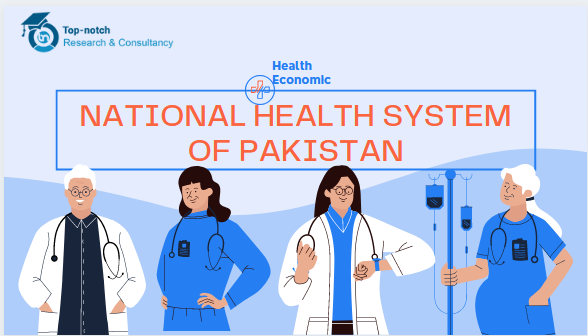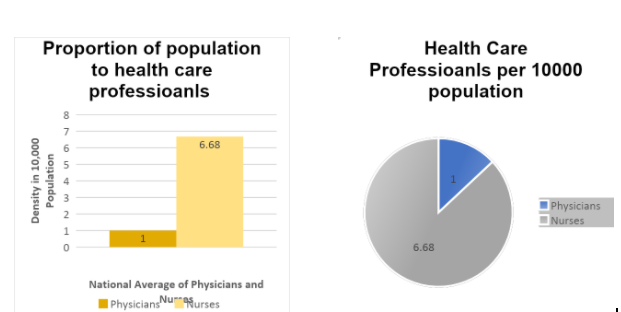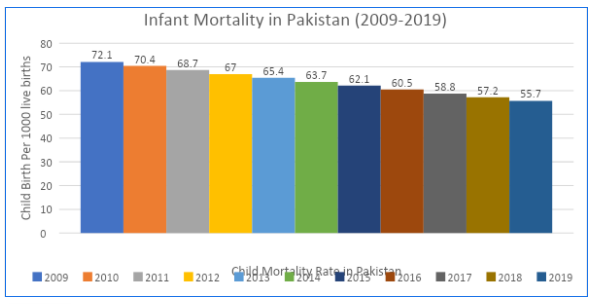Table of Contents
ToggleNational Health System of Pakistan and Its Critical Appraisal in Light of Health Economic Principles, Payment System and The way of Market operates with its Impact on Health Outcome

National Health System of Pakistan. Health is a state of ones physical, mental wellbeing, significantly involved with many health determinants. It is also recognized as a human right( Md. Abu Shahen et al,2020). However, the low socio-economic status of the people in many low- and middle-income countries (LMICs), did not have easily accessible general health services regarding their higher necessities than richer, resulting in disparities (Akazili et al. 2012; Mtei et al. 2012). According to World Health Organization (WHO), National Health System is an association of the organizations, institutions, people, and markets responsible for ensuring maintenance, restoration, and promotion of health or health care services to the mass population. Formulation of an effective national health system requires improvement of population health, good governance, and responsiveness to population health care needs (Bilal, 2021).
Health status and healthcare provisions of Pakistan
Pakistan of 224.1million populated country (Health data, 2019) was in a complicated health care phase due to decentralization strategy (Cheema, 2005). Unfortunately, the national health system being a developing nation is subject to scarcity, limitedness to urban regions, inequality, and disproportionate financing. Pakistan healthcare systems suffer from a lack of manpower and equipment as well-being scarce of doctors, healthcare workers, and necessary equipment in the healthcare facilities.
A large segment of the population in Pakistan faces unnatural death from fatal and terminal diseases as cancer(8%), respiratory illness(8%), cardiovascular diseases(8%) (CDC) signify the precipitation of obesity, alcohol, and tobacco consumption on a large scale (Jafree, 2017) and malnutrition, diarrheal diseases(6%), Regarding public health expenditure, Pakistan were expending tiny amount compared to others (Bank W, 2012), was only 0.4% of its GDP (50 billion PKR) on health while funding dominated by out of pocket payments and contributes to 78.08% (Khan, S. A,2019) with a minimum level of government support (Marchildon and Bossert, 2018). The existent private insurance companies in Pakistan are also unable to extend health coverage packages to the general masses. The public sector should come forward to alleviate this situation and ensure equitable provision along with the private sector and NGOs.
Health care Structure in Pakistan
Pakistan National Health System is pluralistic and is subject to be regulated by several authorities.
The 4 key controllers of the national health care system in Pakistan comprises of:
The government, private sector, and NGOs are involved in the financing, delivery, and maintenance of health care systems.
Levels of Health Care in Pakistan
The national health care system in Pakistan follows a structure. But the structure being pluralistic had led to inequitable distribution.

Purchasing services and Payment Systems
The service quality in both private and public healthcare facilities in Pakistan is not up to the mark. There is an inherent lack of competency, empathy, and assurance towards the patients in the healthcare facilities which appear to be worse off than private hospitals in terms of equipment availability, cleanliness, water supply, etc. On the other hand, the perceived cost at a private hospital is much higher (Boslaugh, 2013). The empathy and responsiveness of nurses are also worse in public hospitals in comparison to private hospitals. In terms of availability of drugs and patient administration also the public hospitals lag from the public ones. This is consistent with World Health Organization (WHO)’s finding that 50% of the equipment in public hospitals of developing countries is of no use or outdated.
Equity
The health care options and conditions are appalling. Even though 16.34% of Pakistan’s population is under 5 years old, the country ranks in the bottom five per cent of the world for health and education spending. In terms of child health equity, it shares the worst spot with Sub-Saharan Africa (Braithwaite, 2018). The study’s goal was to look at health disparities among Pakistan’s children. Pakistan’s health inequities may be traced back to a variety of causes, including extreme poverty, illiteracy, a lack of information and understanding of child health care, and a woefully inadequate supply of health facilities.
Remote parts of Pakistan have always been neglected when it comes to healthcare since they have the lowest levels of access. Pakistan’s healthcare system is very diverse. The healthcare system in this country is extremely dispersed. As a result, for-profit corporations, non-governmental organizations (NGOs), the federal government, and international charity groups all have authority over it. Many issues have arisen as a result of this unequal distribution of power, including differential treatment programs for different socioeconomic groups (Eneanya, 2019). The government is in charge of the legislation and the overall system, other institutions wield substantial power in decision-making. Urban regions are home to the vast majority of doctors and other healthcare professionals. Rural communities frequently lack access to adequate healthcare. Rural residents may now receive lower-cost medical care thanks to several government-funded hospitals that have been built around the country. However, due to a scarcity of healthcare alternatives in rural regions, these hospitals are frequently underfunded, understaffed, and overcrowded. Healthcare in Pakistan is hampered by socioeconomic disparities. The constitution of Pakistan’s government mandates equitable treatment for all people, including in healthcare. Health care must remain a top priority as long as the administration is serious about addressing the existing inequity.
Health Outcome:
Due to a lack of resources in Pakistan and growing antagonism from some quarters, a large number of Pakistani doctors opt to work overseas. In addition, many female physicians have quit their careers owing to pressures from their families and social circles. All things considered, there is one doctor for every 1,764 people in Pakistan (Jafree, 2017). Pakistan requires a minimum of two doctors for every 1,000 people to provide appropriate population coverage. Due to COVID-19’s arrival, Pakistan’s healthcare system is under enormous strain, and it is unable to keep up with the influx of thousands of new patients every day. The infection is wreaking havoc on healthcare professionals on the front lines. Workers in the healthcare industry accounted for around 3% of all cases in the country. Strikes and protests by medical personnel are being held due to a shortage of protective gear needed to treat patients properly. Prime Minister Imran Khan responded to the protests by announcing new healthcare reforms to address the problems in the industry. To pay for new ventilators and other medical equipment, reforms set aside $300 million. Aside from that, large cities are constructing isolation facilities to expand the number of beds available for patients with infectious diseases.
The negative outcome of Health Care System on Population
Death from Fatal Diseases in Pakistan:
The highest death threat in Pakistan’s health care system emerges from Cancer diseases. the second was Pulmonary and lower respiratory illness Infrastructural and technical improvement will have an impact to combat this deadly disease. It also points to the fact there is a substantial level of air pollution, tobacco, and nicotine consumption in the country (Ghaffar and Kazi, 2000).
The data here signifies that the health care system in Pakistanis submerged under an inefficient governance structure, unplanned regulatory framework, and declining managerial effectiveness.
The positive outcome of Health Care System on Population in Pakistan
Child Mortality, Maternal Death at Childbirth and Life Expectancy: The Pakistan health care sector had been trying to meet its MDG Goals of reducing child mortality rate, maternal death rate, and increasing the overall life expectancy. The infant mortality rate in Pakistan had been declining significantly during the last 10 years. The infant mortality that soared up to 19% in 1970 had now come down to 6.7% by the year 2019 proves that the healthcare system’s efficacy is increasing that reflecting the strength of direct patient care.
Conclusion
Pakistan has made commendable progress in the health care industry in comparison to the neighbouring countries. However, the system is still subject to lack of transparency, erroneous distribution channels, lack of quality treatment due to disproportionate doctor-to-patient and doctor-to-nurse ratios. The national health care system is also not making necessary expenditures into the health care industry in comparison to the population dynamics. The coverage of healthcare services is also inadequate.
Recommendation:
The following initiatives can be taken to reform the fragile health care infrastructure:
- Revising the National Health Policy Draft and making necessary amendments with lessons learned from former practices.
- Devising a Cross-Functional Health Care Information System that will encompass equally in rural and urban areas rather than piling up urban areas with secondary and tertiary healthcare facilities.
- Employing Incentive Packages for the health care professionals, so that more people pursue the career of health care workers, physicians, and nurses.
- The quality of delivered health care services needs to be enhanced for reducing the scarcity of trained health care workers and trained community workers.
- Needed for long-Term and Sustainable health plans.

